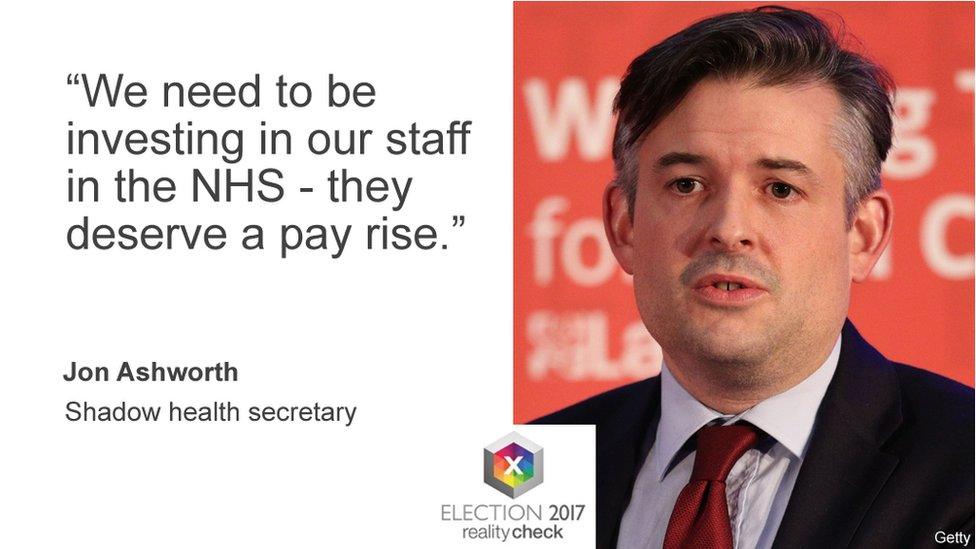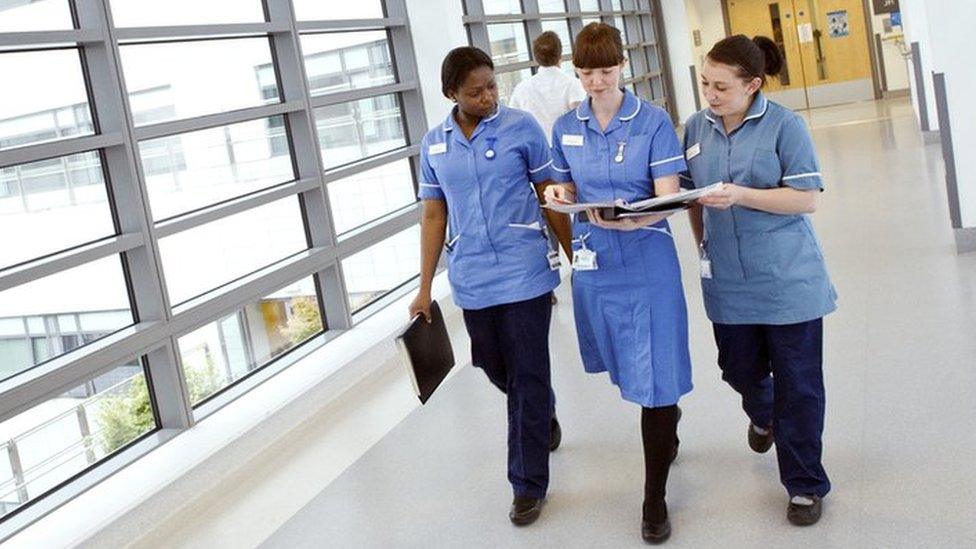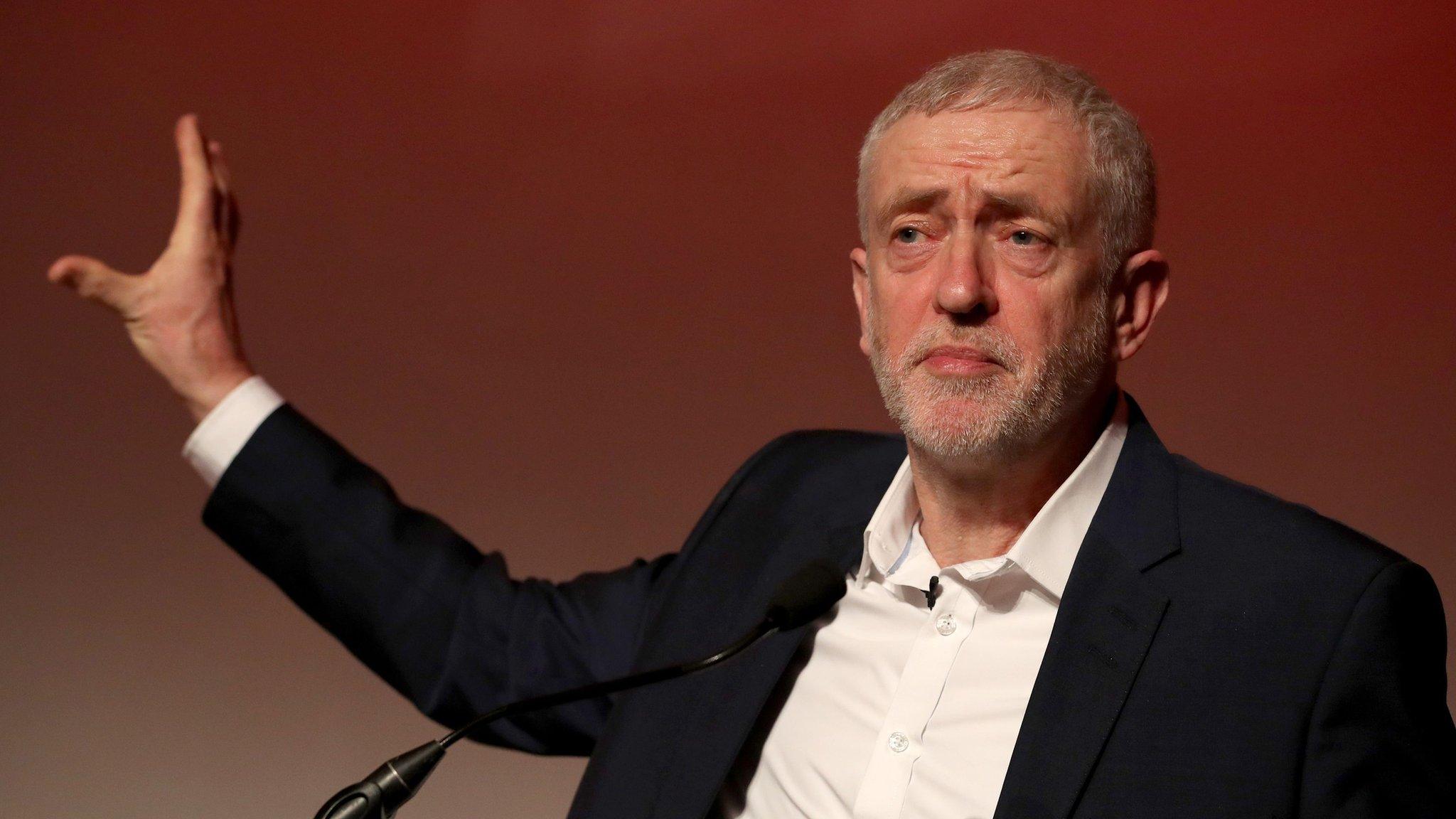Reality Check: How much will Labour's NHS plans cost?
- Published

Labour has begun setting out its plan for the NHS in England if the party wins in June.
This includes a pay increase for staff, putting into law the mandatory minimum number of staff per patient and funding training for health professionals.
Speaking to BBC Radio 4's Today programme, Labour's shadow health secretary Jon Ashworth said the money for these pledges would be raised by increasing corporation tax.
How much will need to be raised has not yet been confirmed.
Corporation tax - the tax on companies' profits - has been cut from 28% in 2010 to 19%, and is due to come down to 17% by 2020.
Labour used official figures, external to calculate that between 2016-17 and 2021-22, cuts to corporation tax would amount to £64bn less in the public purse.
We are talking about the NHS in England only since health is a devolved matter and the other nations' administrations generally set their own policies.
For example, although the recommendations of pay review bodies are UK-wide, nations get to choose whether to accept them.
It is unlikely that the precise figures behind Labour's policies will be available until the party's manifesto is published, next month.
Even then, we probably will not know exactly by how much pay will be increased and what level the minimum staffing will be set at, so it's difficult to say exactly how much this all going to cost.
However, we can estimate how much various elements of the pledge might cost.
Labour said it would increase pay to a "sustainable level" and lift the pay cap currently in force that means NHS staff pay has not increased by more than 1% a year for the past six years, although many staff also get incremental pay-rises to reflect progression within their roles.
We don't know exactly what a "sustainable increase" will be.
Mr Ashworth said the decision would be taken by an independent pay review body.
Paul Johnson, director of the Institute for Fiscal Studies think tank, has estimated that every 1% pay rise would cost £500m a year.
Labour's own estimates put it at £350m, but this excludes doctors.
When the government cut funding for health students by replacing grants with loans, it calculated this would save the Treasury £800m, so we can reasonably say reversing this cut would cost the same amount.
Labour also set out plans to introduce mandatory minimum staffing levels.
Sir Robert Francis' report into the failings at the Mid-Staffordshire Foundation Trust published in February 2013 found low levels of staffing were linked to poor care and recommended minimum safe staffing levels should be drawn up.
The Public Accounts Committee, a cross-party group of MPs responsible for overseeing government expenditure, estimated last year that the NHS was short-staffed by about 50,000. Employing this number of extra people could cost about £2-3bn depending on how many of them were nurses, doctors or in other roles.
The NHS spends about £40bn a year on front-line staff.
Another 50,000 staff would be about a 6% increase to the total number of NHS staff caring for patients, amounting to an extra £2.4bn on the pay bill.
This is a very rough estimate.
Mr Ashworth also pointed out that hiring more staff and raising their pay would help reduce the NHS's dependency on agency workers who cost the health service more than salaried employees.
In 2015, agency nurses cost, on average, an estimated £39 per hour, compared with £27 per hour for NHS staff bank nurses.
However, this is not the only way Labour has promised to spend the extra money from raising corporation tax.
Since Jeremy Corbyn became leader of the party, in 2015, Labour has pledged to raise corporation tax to fund:
British Steel
the reintroduction of student maintenance grants
the scrapping of university tuition fees
the schools budget
social care



- Published26 April 2017

- Published13 March 2017

- Published8 February 2017
- Published13 April 2017

- Published12 January 2017
